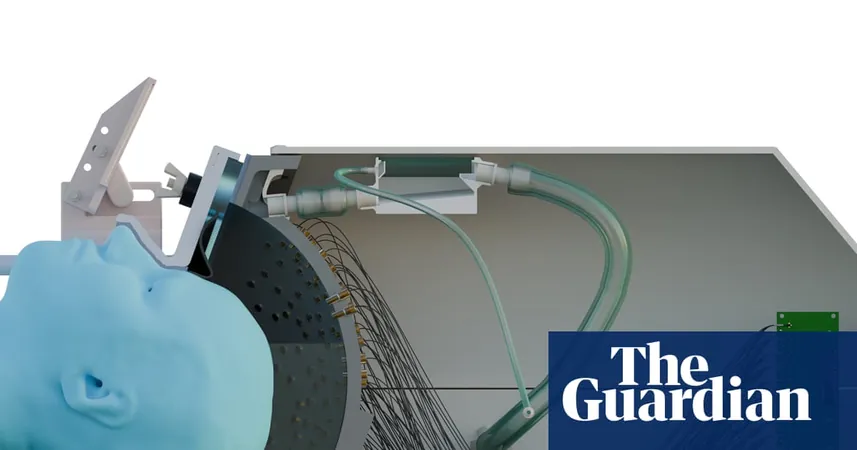
Revolutionary Ultrasound ‘Helmet’ Could Transform Parkinson’s Treatment Without Surgery
2025-09-06
Author: Ting
A Non-Invasive Game-Changer for Neurological Disorders
A groundbreaking study has unveiled an innovative ultrasound ‘helmet’ that holds the promise of treating neurological conditions without resorting to surgery. This pioneering device can precisely target brain regions over 1,000 times smaller than traditional methods, presenting a compelling alternative to invasive treatments like deep brain stimulation (DBS) for Parkinson’s disease.
How It Works: The Science Behind the Helmet
Unlike DBS, which requires the implantation of electrodes deep within the brain, this new technology harnesses mechanical pulses delivered through ultrasound. The breakthrough study, featured in *Nature Communications*, introduces a system capable of hitting brain regions with 30 times greater precision than previous ultrasound devices.
Experience of the ‘Helmet’
Described as a somewhat bulky apparatus with 256 sources, it fits comfortably inside an MRI scanner. Participant Ioana Grigoras from Oxford University noted, "It may feel claustrophobic at first, but you adjust quickly." This contrasts sharply with current DBS methods, which utilize hard metal frames physically affixed to the skull.
Promising Results from Initial Trials
The research team conducted tests on seven volunteers, targeting a minute area the size of a grain of rice within the lateral geniculate nucleus (LGN)—a pivotal hub for visual information. Senior author, Professor Charlotte Stagg, exclaimed, "The ultrasound waves reached their target with remarkable accuracy—a first in the field!" Subsequent experiments showed that modulating the LGN resulted in sustained effects on the visual cortex, potentially offering similar results for motor control areas in Parkinson’s patients.
A Milestone for Neuroscience
Neuroscience professor Elsa Fouragnan from Plymouth University emphasized that this proof of concept marks a significant milestone with immense clinical potential. Offering her heartfelt congratulations to the authors, she acknowledged its remarkable implications for future treatments.
A Decade in the Making
The development of this innovative helmet spanned over ten years, with collaborative efforts between teams from University College London and Oxford University. Reflecting on the journey, Stagg mentioned, "When we began this project, I was pregnant with my daughter. Here we are, 12 years later, striving for clinical applications before she heads to university!"
Future Prospects of the Ultrasound Helmet
The research team is already poised to explore its applications in treating other conditions, including schizophrenia, stroke recovery, chronic pain, and depression. The helmet’s creators, Elly Martin and Brad Treeby, stress patient comfort in its design, aiming to make it adaptable for various neurological conditions.
A Vision for At-Home Use
Treeby revealed plans to establish a company focused on this helmet, envisioning a future where, with AI assistance, it could operate autonomously, enabling patients to use it from the comfort of their homes. Although further studies are essential, the ultimate goal is to refine this technology into a dependable clinical tool, one that could potentially replace invasive brain implants.



 Brasil (PT)
Brasil (PT)
 Canada (EN)
Canada (EN)
 Chile (ES)
Chile (ES)
 Česko (CS)
Česko (CS)
 대한민국 (KO)
대한민국 (KO)
 España (ES)
España (ES)
 France (FR)
France (FR)
 Hong Kong (EN)
Hong Kong (EN)
 Italia (IT)
Italia (IT)
 日本 (JA)
日本 (JA)
 Magyarország (HU)
Magyarország (HU)
 Norge (NO)
Norge (NO)
 Polska (PL)
Polska (PL)
 Schweiz (DE)
Schweiz (DE)
 Singapore (EN)
Singapore (EN)
 Sverige (SV)
Sverige (SV)
 Suomi (FI)
Suomi (FI)
 Türkiye (TR)
Türkiye (TR)
 الإمارات العربية المتحدة (AR)
الإمارات العربية المتحدة (AR)